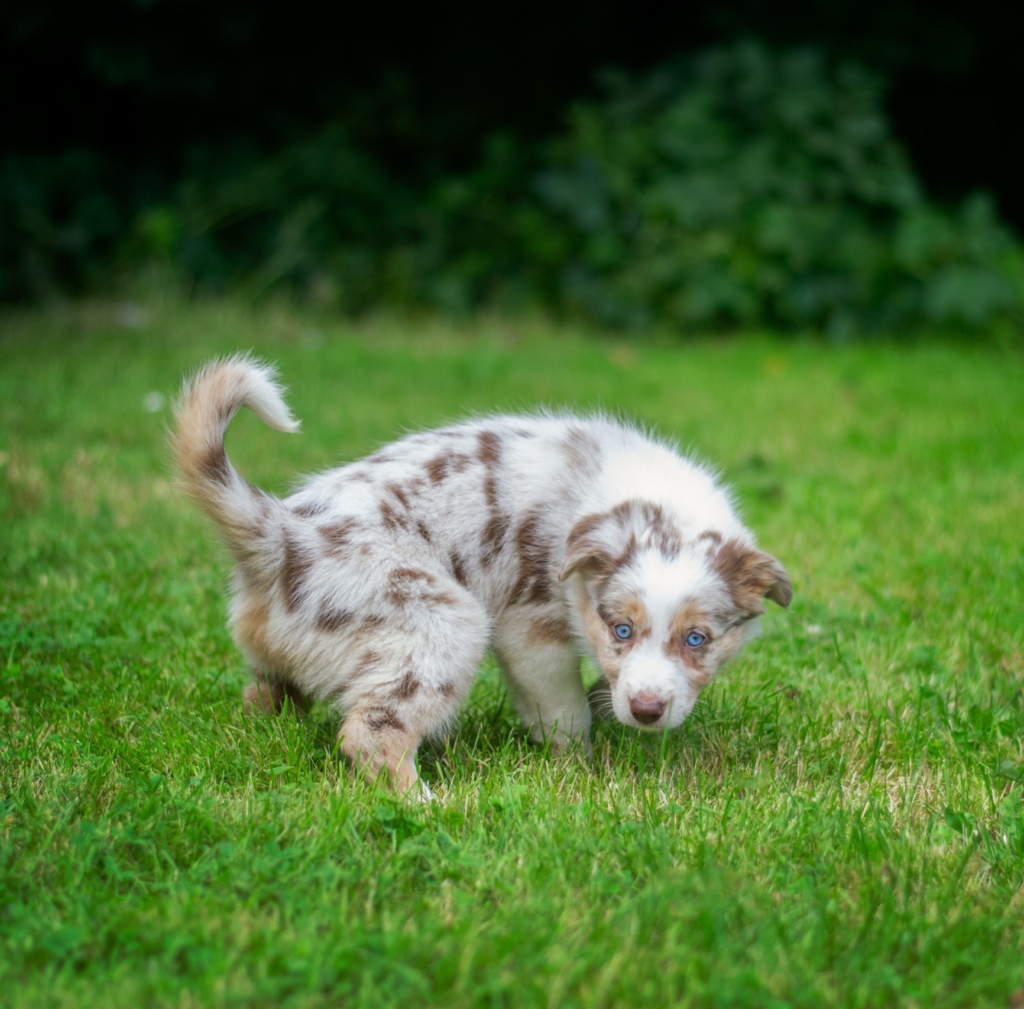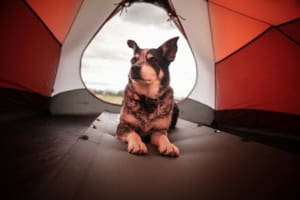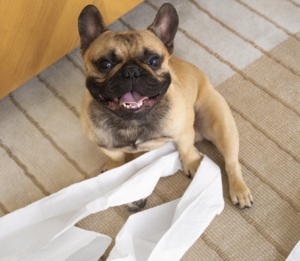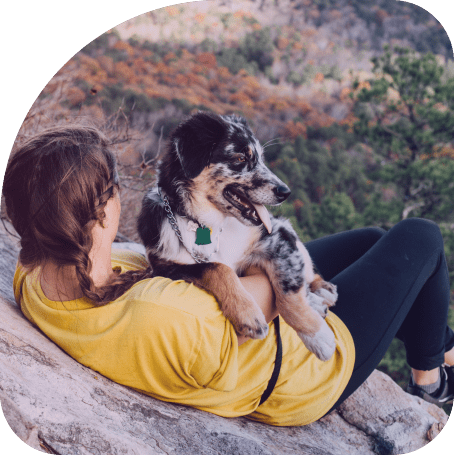If you have a puppy or an older dog that is going to the bathroom in your house, and you would much prefer them to go outside instead, then this series is for you. Bare with us as we dive deep into the world of house training.
Most puppies tend to get the hang of house training by around 5 months old, however, there are some that pick it up way faster, and others that struggle for much longer. There are times when we see adult dogs that still go in the house, but often this can be due to medical issues or perhaps they simply have never learned better. It can feel like a daunting task to get your dog to grasp the concept of only going outside, and we know it can also be very frustrating when accidents continue to happen.
Ultimately it will depend on how consistent and on the ball you are, as well as your dog’s breed, age, size, history, emotional state, medical state, and also, what their experience was going to the bathroom before you got them.
Just like the rest of our training at ReadyDog, our house training methods follow a positive reinforcement approach that will help your puppy understand that outside is where they should go to the bathroom, not inside.
In this first blog of our housetraining series, we will dive into:
- How to understand when your puppy needs to go to the bathroom
- How to housetrain your dog
- Crate training and how to use it for house training
- Prevention methods for housetraining
- What to do or not to do when your dog has an accident
- What to do at night
Let’s dive in…
How to understand when your puppy needs to go to the bathroom
There are many different indicators that your puppy may need to go to the bathroom. Some indicators that your pup is about to eliminate could look like:
- Sniffing the ground
- Pacing or restlessness
- Wandering over to quieter or hidden parts of the house
- Scratching the ground
- Squatting
- Walking with more straight hind legs, holding their tail up higher or out straighter, and sometimes, even doing a bunch of these moves all at once.
All these signs may not be obvious or consistent, so keeping a regular schedule and having management strategies in place will significantly help to avoid accidents indoors.
We’ll explain more about what strategies you can use and what management looks like below.
The best way to keep track of your dog’s bathroom schedule is to make it yourself! Pay attention to how often they relieve themselves and then set a timer for a slightly shorter time frame. For example, if they need to pee every 45 minutes, then set a timer to take them outside every 30-40 minutes.
Keep in mind that smaller breeds typically need to go pee way more often than larger breeds.
As your puppy ages, they’ll be able to hold it longer and longer but for now, you will need to let them out after every activity. By every activity, we mean EVERY activity! This includes after drinking, eating, sleeping, playing, and training. Pretty much any time their heart rate speeds up they will likely need to pee right after.
How to housetrain your puppy
Consistency and management are the keys to success!
First, we need to pick a spot in your yard, property or outside that will be their bathroom location. Somewhere that you can get to quickly. Dogs tend to prefer a grassy patch. If your dog shows a preference to go to the bathroom in a specific spot that is acceptable outside, then go with whatever that is!
Keep in mind that puppies without their full set of vaccinations should avoid areas where other dogs frequently go.
Wherever the chosen outdoor spot is, you will go there every time for bathroom breaks. Being consistent is very important. Your dog should be on a leash, even if it’s in your fenced-in yard, we want to make sure that they can’t wander away while you are at the potty spot. Hang around that spot for 5-10 minutes or until your dog goes. Hold on to the end of their leash, plant yourself firmly in one spot and stay there until they have gone. Be patient.
Give it a good 10 minutes if needed. Don’t give up too soon, as pups will often need a few minutes to sniff around, look around, play, stretch, munch on grass etc. Stick your landing and keep reminding them to go. If they have to go, they likely will.
However, if they don’t go as they are too distracted, then bring them back inside while keeping them on-leash. Then, put them directly into their crate or x-pen (or they can stay in your arms if they’re small enough). Set your alarm for 5 minutes, and then take them right back outside. No free time in the house until they’ve gone and done their business outside!
The next step is to reinforce your dog for doing their business outside. Supervise your pup, so you can catch the moment they relieve themselves. Giving your dog several treats to accompany your praise after they’ve finished will make it a very valuable experience for them to go to the bathroom outside versus inside. So make sure to bring high-value treats with you every time. You want to consistently reinforce their good choices. A treat pouch is a great option for training, so keep that with your leash so you always have it with you. Try to keep it topped off with treats so you don’t find yourself without a reinforcer. Another option is keeping a jar of treats by the leash and poop bags, at the door so you can grab it all together on the way outside.
Have a potty schedule:
Crate or pen time → potty break → exercise, play or training → repeat.
Here is a sample schedule to help you get started. You may note that we are not providing specific times as that is unique to you and your pup. What is important is the sequence of the events:
- Morning wake-up → potty break
- Morning train/play/exercise → potty break
- Water and breakfast → potty break
- Crate or XPen/downtime with something to chew on, or napping → upon waking immediate potty break
- Repeat until lunchtime.
- Afternoon train/play/exercise → potty break
- Crate or XPen/downtime with something to chew on, or napping → upon waking immediate potty break
- Repeat until dinner time.
- Evening train/play/exercise → potty break
- Crate or XPen/downtime with something to chew on, or napping → upon waking immediate potty break
Repeat until bedtime
Crate Training and how to use it for house training
Crates are a great tool to help you manage accidents in the house. However, this only works if your pup is crate-trained. So after you read this blog, be sure to watch our crate training video series for a more in-depth explanation of how to properly crate train your dog.
First, you need a properly sized crate, big enough for your puppy to fully lay out, stand and turn around in, but not big enough to choose one end as a potty area and the other for sleeping. Another option is to buy a larger crate with a dividing panel so you can adjust it as your puppy grows. Because the crate will be sized for sleeping only, your puppy shouldn’t have extra space for other activities in there.
Use the crate during your pup’s regularly scheduled downtime, this way there is nowhere for your pup to have an accident when they’re not supervised. This will encourage them to rest as the routine becomes familiar and they understand they’ll be let out to relieve themselves as soon as they wake up.
Remember, you can always come back to this blog for help!
Check out the following blog post for part two of our house training series where we will go into detail about:
- Prevention methods for housetraining
- What to do or what not to do when your dog has an accident
- What to do at night
- Adding a cue so your dog goes when you ask them to



